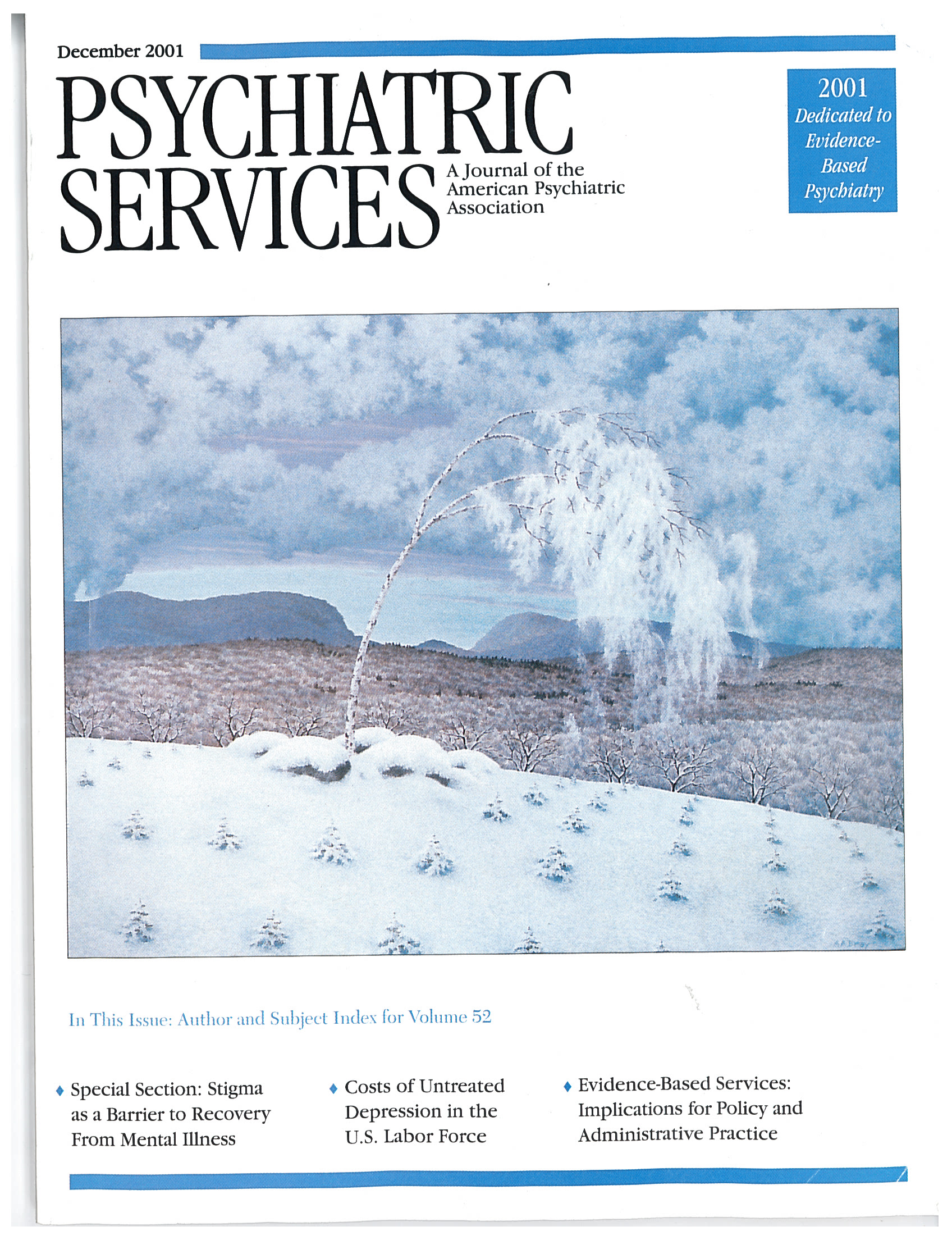Recognizing and Managing "Illy" Intoxication
To the Editor: "Illy" or "fry," a combination of marijuana, phencyclidine (PCP), and embalming fluid, is portrayed on the streets as super-marijuana. Although the prevalence of marijuana use is stabilizing, it is frequently used in combination with other drugs (1). A significant increase in the use of PCP and PCP-combination products has been noted in emergency departments (2). Several states, such as Connecticut (3) and Texas (4), have initiated studies of illy use and have formed task forces to curtail its spread. In this letter we describe the pharmacology, presenting symptoms, and management of illy intoxication.
Four pharmacological agents may be active in illy: tetrahydrocannabinol (THC), PCP, formaldehyde, and embalming fluid. (Embalming fluid is composed of formaldehyde, methanol, ethyl alcohol or ethanol, and other solvents.) Other relatively inert agents like mint or parsley may be added to improve taste. Both PCP and THC have reinforcing effects, and embalming fluid may enhance their absorption by slowing the rate at which the marijuana burns (3). Whether the substances interact or have synergistic or addictive effects is unclear.
The clinical picture of illy intoxication is derived primarily from observations in emergency settings. Like PCP, illy induces hallucinations, psychomotor agitation, impaired judgment, and intermittent violence. Cognitive deficits, such as an inability to recall violent acts, may also be noted. Physical symptoms may include autonomic arousal, dry mouth, ataxia, and numbness (3).
The acute symptoms of illy intoxication usually subside in 24 to 36 hours, but the course may vary, depending on the half-lives of the drugs used in a particular illy mixture. Both PCP and THC can be stored in fats and then released, causing recurrence of symptoms. Although the long-term effects of illy are unknown, cognitive deficits may persist (4).
Because multiple drug use and psychopathology are common among substance abusers, diagnosis of illy intoxication can be challenging. Blood or urine specimens may confirm use of THC and PCP, but they do not detect all components of illy. Therefore, the diagnosis is based on self-report of illy consumption, a consistent clinical presentation, and exclusion of intoxication from other drugs and psychiatric disorders.
Treatment should focus on minimizing aggressive behaviors and monitoring medical complications. Illy users seem to be particularly susceptible to environmental stimuli, a factor that may pose significant challenges in busy emergency departments or in jail settings.
Short-term pharmacological treatment strategies include use of benzodiazepines and antipsychotics (3). Although benzodiazepines lower the seizure threshold and may prevent PCP-induced musculoskeletal complications, they may also exacerbate behavioral disinhibition. Antipsychotics, in addition to their standard adverse effects, may also cause rhabdomyolysis, which is also associated with PCP use. Nevertheless, haloperidol and droperidol have been used to manage aggression among users of illy.
Use of illy appears to be a growing public health concern. No empirically based guidelines for managing illy intoxication are available, but both benzodiazepines and antipsychotics may be helpful as long as the patient is monitored for potential drug interactions and medical complications.
The authors are affiliated with the Alcohol Research Center in the department of psychiatry at the University of Connecticut School of Medicine in Farmington.
1. Epidemiologic Trends in Drug Abuse Advance Report: San Francisco Advance Report 1-27. Community Epidemiology Work Group Publications, 12/00. Rockville, Md, National Institute on Drug Abuse, Dec 2000Google Scholar
2. Drug Abuse Warning Network (DAWN): Mid-Year 2000 Preliminary ED DAWN Data. Rockville, Md, Substance Abuse and Mental Health Services Administration, Office of Applied Studies, 2000Google Scholar
3. Weiner AL: Emerging drugs of abuse in Connecticut. Connecticut Medicine 64(1):19-23, 2000Google Scholar
4. Elwood WN: "Fry": A Study of Adolescents' Use of Embalming Fluid With Marijuana and Tobacco. TCADA Research Brief. Austin, Texas Commission on Alcohol and Drug Abuse, 1998Google Scholar



